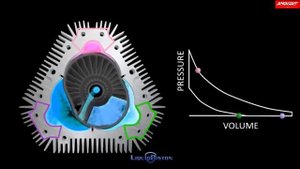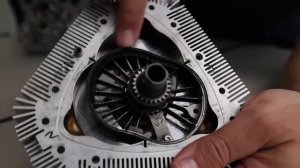
 5:53
5:53
2024-03-01 06:58

 9:14
9:14

 9:14
9:14
2025-08-06 09:09

 2:26
2:26

 2:26
2:26
2024-10-10 21:12

 2:21:03
2:21:03

 2:21:03
2:21:03
2024-09-29 21:40

 10:42
10:42

 10:42
10:42
2024-08-21 12:04

 12:12
12:12

 12:12
12:12
2025-02-15 17:06

 9:25
9:25

 9:25
9:25
2025-03-16 07:20

 1:14:48
1:14:48

 1:14:48
1:14:48
2024-10-02 15:00
![ДАР УБЕЖДЕНИЯ | НАДЕЖДА СЫСОЕВА]() 49:20
49:20
 49:20
49:20
2024-10-02 17:03

 1:53:18
1:53:18

 1:53:18
1:53:18
2024-09-28 21:00

 2:02:01
2:02:01

 2:02:01
2:02:01
2024-09-29 23:00

 1:56
1:56

 1:56
1:56
2023-08-29 12:47

 1:25:42
1:25:42

 1:25:42
1:25:42
2024-09-30 20:00

 46:36
46:36

 46:36
46:36
2024-09-27 18:09

 49:51
49:51

 49:51
49:51
2024-10-02 15:57

 27:00
27:00

 27:00
27:00
2024-10-01 01:30

 1:09:36
1:09:36

 1:09:36
1:09:36
2024-09-25 17:56

 29:05
29:05
![Бобур Ахмад - Куролмаслар (Премьера клипа 2025)]() 3:33
3:33
![Enrasta - За тобой (Премьера клипа 2025)]() 2:41
2:41
![Gulinur - Nishatar (Official Video 2025)]() 3:40
3:40
![Tamo ft Djan Edmonte - Ну что красавица (Премьера клипа 2025)]() 3:10
3:10
![KAYA - Девочки, отмена (Премьера клипа 2025)]() 3:53
3:53
![Илёс Юнусий - Каранг она якинларим (Премьера клипа 2025)]() 3:36
3:36
![Tural Everest, Baarni - Ушедший покой (Премьера клипа 2025)]() 3:01
3:01
![Roza Zərgərli, Мурад Байкаев - Неизбежная любовь (Премьера клипа 2025)]() 2:34
2:34
![Анжелика Агурбаш - Утро (Премьера клипа 2025)]() 3:33
3:33
![NIKA DUBIK, Winter Spirit - Искры (Премьера клипа 2025)]() 4:27
4:27
![Соня Белькевич, Олег Семенов - Увы, мадам (Премьера 2025)]() 3:33
3:33
![Абдуллах Борлаков, Мекка Борлакова - Звездная ночь (Премьера клипа 2025)]() 4:25
4:25
![Мохито, DJ DimixeR - Перед рассветом (Премьера клипа 2025)]() 2:29
2:29
![Alex Lim, Игорь Крутой - Вокзал (Премьера клипа 2025)]() 3:32
3:32
![Кравц - Пусть музыка играет (Премьера клипа 2025)]() 3:01
3:01
![Равшанбек Балтаев - Кастюм (Премьера клипа 2025)]() 3:59
3:59
![Мухит Бобоев - Маликам (Премьера клипа 2025)]() 3:18
3:18
![Григорий Герасимов - Сгоревшие мосты (Премьера клипа 2025)]() 3:05
3:05
![Зара - Прерванный полет (Премьера клипа 2025)]() 5:08
5:08
![Игорь Балан - Белая зима (Премьера 2025)]() 3:10
3:10
![Кровавый четверг | Thursday (1998) (Гоблин)]() 1:27:51
1:27:51
![Стив | Steve (2025)]() 1:33:34
1:33:34
![Чумовая пятница 2 | Freakier Friday (2025)]() 1:50:38
1:50:38
![Код 3 | Code 3 (2025)]() 1:39:56
1:39:56
![Большой Лебовски | The Big Lebowski (1998) (Гоблин)]() 1:56:59
1:56:59
![Карты, деньги, два ствола | Lock, Stock and Two Smoking Barrels (1998) (Гоблин)]() 1:47:27
1:47:27
![Девушка из каюты №10 | The Woman in Cabin 10 (2025)]() 1:35:11
1:35:11
![Тот самый | Him (2025)]() 1:36:20
1:36:20
![Диспетчер | Relay (2025)]() 1:51:56
1:51:56
![Рука, качающая колыбель | The Hand That Rocks the Cradle (2025)]() 1:44:57
1:44:57
![Кей-поп-охотницы на демонов | KPop Demon Hunters (2025)]() 1:39:41
1:39:41
![Грязь | Filth (2013) (Гоблин)]() 1:37:25
1:37:25
![Чёрный телефон 2 | Black Phone 2 (2025)]() 1:53:55
1:53:55
![Мужчина у меня в подвале | The Man in My Basement (2025)]() 1:54:48
1:54:48
![Вальсируя с Брандо | Waltzing with Brando (2024)]() 1:44:15
1:44:15
![Школьный автобус | The Lost Bus (2025)]() 2:09:55
2:09:55
![Крысы: Ведьмачья история | The Rats: A Witcher Tale (2025)]() 1:23:01
1:23:01
![Орудия | Weapons (2025)]() 2:08:34
2:08:34
![Большое смелое красивое путешествие | A Big Bold Beautiful Journey (2025)]() 1:49:20
1:49:20
![Терминатор 2: Судный день | Terminator 2: Judgment Day (1991) (Гоблин)]() 2:36:13
2:36:13
![Таинственные золотые города]() 23:04
23:04
![Карли – искательница приключений. Древнее королевство]() 13:00
13:00
![Папа Супергерой Сезон 1]() 4:28
4:28
![Команда Дино Сезон 1]() 12:08
12:08
![Енотки]() 7:04
7:04
![Корги по имени Моко. Новый питомец]() 3:28
3:28
![Забавные медвежата]() 13:00
13:00
![Лудлвилль]() 7:09
7:09
![МиниФорс Сезон 1]() 13:12
13:12
![Простоквашино]() 6:48
6:48
![Тодли Великолепный!]() 3:15
3:15
![МиниФорс]() 0:00
0:00
![Ну, погоди! Каникулы]() 7:09
7:09
![Полли Покет Сезон 1]() 21:30
21:30
![Новогодние мультики – Союзмультфильм]() 7:04
7:04
![Пиратская школа]() 11:06
11:06
![Синдбад и семь галактик Сезон 1]() 10:23
10:23
![Новое ПРОСТОКВАШИНО]() 6:30
6:30
![Пакман в мире привидений]() 21:37
21:37
![Супер Зак]() 11:38
11:38

 29:05
29:05Скачать видео
| 256x144 | ||
| 426x240 | ||
| 640x360 | ||
| 854x480 | ||
| 1280x720 | ||
| 1920x1080 |
 3:33
3:33
2025-11-02 10:17
 2:41
2:41
2025-11-07 14:04
 3:40
3:40
2025-10-31 13:38
 3:10
3:10
2025-11-07 13:57
 3:53
3:53
2025-11-06 12:59
 3:36
3:36
2025-11-02 10:25
 3:01
3:01
2025-10-31 13:49
 2:34
2:34
2025-11-05 11:45
 3:33
3:33
2025-11-02 10:06
 4:27
4:27
2025-10-31 16:00
 3:33
3:33
2025-11-07 15:10
 4:25
4:25
2025-11-07 13:49
 2:29
2:29
2025-11-07 13:53
 3:32
3:32
2025-10-31 15:50
 3:01
3:01
2025-11-07 14:41
 3:59
3:59
2025-11-04 18:03
 3:18
3:18
2025-11-02 10:30
 3:05
3:05
2025-11-06 12:13
 5:08
5:08
2025-10-31 12:50
 3:10
3:10
2025-11-07 14:48
0/0
 1:27:51
1:27:51
2025-09-23 22:52
 1:33:34
1:33:34
2025-10-08 12:27
 1:50:38
1:50:38
2025-10-16 16:08
 1:39:56
1:39:56
2025-10-02 20:46
 1:56:59
1:56:59
2025-09-23 22:53
 1:47:27
1:47:27
2025-09-23 22:52
 1:35:11
1:35:11
2025-10-13 12:06
 1:36:20
1:36:20
2025-10-09 20:02
 1:51:56
1:51:56
2025-09-24 11:35
 1:44:57
1:44:57
2025-10-29 16:30
 1:39:41
1:39:41
2025-10-29 16:30
 1:37:25
1:37:25
2025-09-23 22:52
 1:53:55
1:53:55
2025-11-05 19:47
 1:54:48
1:54:48
2025-10-01 15:17
 1:44:15
1:44:15
2025-11-07 20:19
 2:09:55
2:09:55
2025-10-05 00:32
 1:23:01
1:23:01
2025-11-05 19:47
 2:08:34
2:08:34
2025-09-24 22:05
 1:49:20
1:49:20
2025-10-21 22:50
 2:36:13
2:36:13
2025-10-07 09:27
0/0
 23:04
23:04
2025-01-09 17:26
 13:00
13:00
2024-11-28 16:19
2021-09-22 21:52
2021-09-22 22:29
 7:04
7:04
2022-03-29 18:22
 3:28
3:28
2025-01-09 17:01
 13:00
13:00
2024-12-02 13:15
 7:09
7:09
2023-07-06 19:20
2021-09-23 00:15
 6:48
6:48
2025-10-17 10:00
 3:15
3:15
2025-06-10 13:56
 0:00
0:00
2025-11-10 20:26
 7:09
7:09
2025-08-19 17:20
2021-09-22 23:09
 7:04
7:04
2023-07-25 00:09
 11:06
11:06
2022-04-01 15:56
2021-09-22 23:09
 6:30
6:30
2018-04-03 10:35
 21:37
21:37
2024-11-28 17:35
2021-09-22 22:07
0/0

